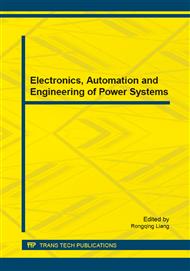p.393
p.398
p.403
p.408
p.412
p.416
p.422
p.428
p.435
Study on Dual Mode Fusion Method of Video and Audio
Abstract:
In order to solve the hearing-impaired students in class only rely on sign language, amount of classroom information received less, This paper studies video and audio dual mode fusion algorithm combined with lip reading、speech recognition technology and information fusion technology.First ,speech feature extraction, processing of speech signal, the speech synchronization output text. At the same time, extraction of video features, voice and video signal fusion, Make voice information into visual information that the hearing-impaired students can receive. Make the students receive text messages as receive visual information, improve speech recognition rate, so meet the need of the classroom teaching for hearing-impaired students.
Info:
Periodical:
Pages:
412-415
Citation:
Online since:
February 2015
Authors:
Price:
Сopyright:
© 2015 Trans Tech Publications Ltd. All Rights Reserved
Share:
Citation:


